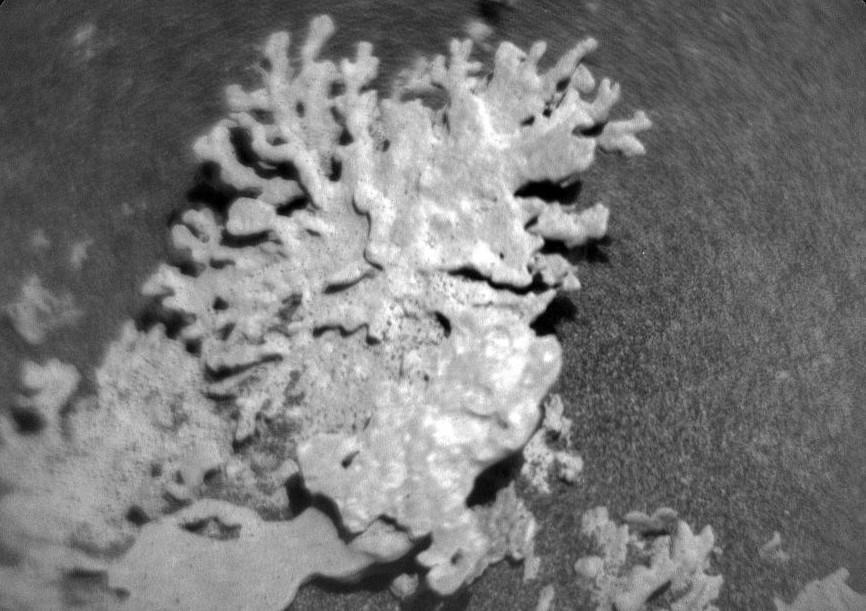
Coral-shaped rock spotted on Mars, NASA shares pic
NASA’s Curiosity Mars rover has sent back some fascinating images of the Martian surface, and one of the most striking ones is a rock that bears an uncanny resemblance to a piece of coral. The rock was found in the Gale Crater, a large impact basin on Mars, and is believed to be around a billion years old.
The image, which was captured by the rover’s ChemCam instrument, shows a black and white picture of the rock, which has a distinctive coral-like shape. The rock is approximately 18 inches (45 centimeters) tall and has a rough, porous surface.
The discovery of this coral-shaped rock is significant because it provides scientists with valuable insights into the geological history of Mars. The Gale Crater, where the rock was found, is believed to have formed around 3.5 billion years ago as a result of a massive impact. The crater is about 97 miles (156 kilometers) wide and 2 miles (3 kilometers) deep.
The Curiosity rover has been exploring the Gale Crater since 2012, and it has sent back a wealth of information about the Martian surface. The rover is equipped with a range of instruments that allow it to analyze the chemical composition of rocks and soil, as well as to study the Martian geology.
The ChemCam instrument, which captured the coral-shaped rock image, is a laser-induced breakdown spectroscopy (LIBS) instrument that is designed to analyze the chemical composition of rocks and soil. It works by firing a high-powered laser at the target, which vaporizes the surface and creates a plasma. The plasma is then analyzed to determine the chemical composition of the rock or soil.
The coral-shaped rock is believed to have formed as a result of the interaction between water and volcanic rocks on Mars. The rock is thought to have been formed through the process of hydrothermal alteration, which occurs when hot water flows through rocks and causes them to alter their chemical composition.
The discovery of this coral-shaped rock is significant because it provides scientists with evidence of the presence of water on Mars in the past. The rock is thought to have formed in a marine environment, which suggests that Mars may have had oceans or lakes in the distant past.
NASA’s Curiosity rover has been exploring the Martian surface since 2012, and it has sent back a wealth of information about the planet. The rover is equipped with a range of instruments that allow it to analyze the chemical composition of rocks and soil, as well as to study the Martian geology.
The Curiosity rover is a testament to NASA’s commitment to exploring the universe and understanding the mysteries of the solar system. The rover is designed to operate for at least 687 days, but it has already far exceeded its expected lifespan and is still going strong.
The discovery of the coral-shaped rock on Mars is a reminder of the fascinating geology of the planet and the many wonders that it still holds. As NASA continues to explore Mars and other planets in our solar system, we can expect to learn even more about the history and evolution of our universe.
Source: https://www.jpl.nasa.gov/images/pia26634-curiositys-chemcam-views-a-rock-shaped-like-coral/






